Article directory
Preface
In this rapidly developing technology era, cloud computing has become an essential tool for small and medium-sized enterprises and developers to achieve innovation and development. In order to meet your needs for lightweight and ease of use, we have introduced a new Yunyao Cloud Server L instance.
Yunyao Cloud Server L instance is an out-of-the-box cloud server specially designed for small and medium-sized enterprises and developers. It is unique for its rich and carefully selected application images, allowing you to easily deploy applications with one click. This means that you can easily and efficiently build e-commerce websites, web applications, applets, learning environments, and various development and testing tasks on the cloud.
Target
In this blog we will use **Huawei Cloud Yaoyun Server L** to deploy a simple web application. Through this blog you can learn
- What is Huawei Cloud Yaoyun Server L
- Ruhe uses Huawei Cloud Yaoyun Server L
- Ruhe conducts project deployment based on pagoda
- Access the deployed project through IP
Yunyao Cloud Server L instance purchase
First purchase the Yunyao Cloud Server L instance: https://console.huaweicloud.com/smb/?region=cn-north-4#/create/hecs-light?period=month_1&plan=basic_v1
Note: If you want to play by yourself, you can buy it for one month! Scroll to the bottom of the page to choose the purchase duration.
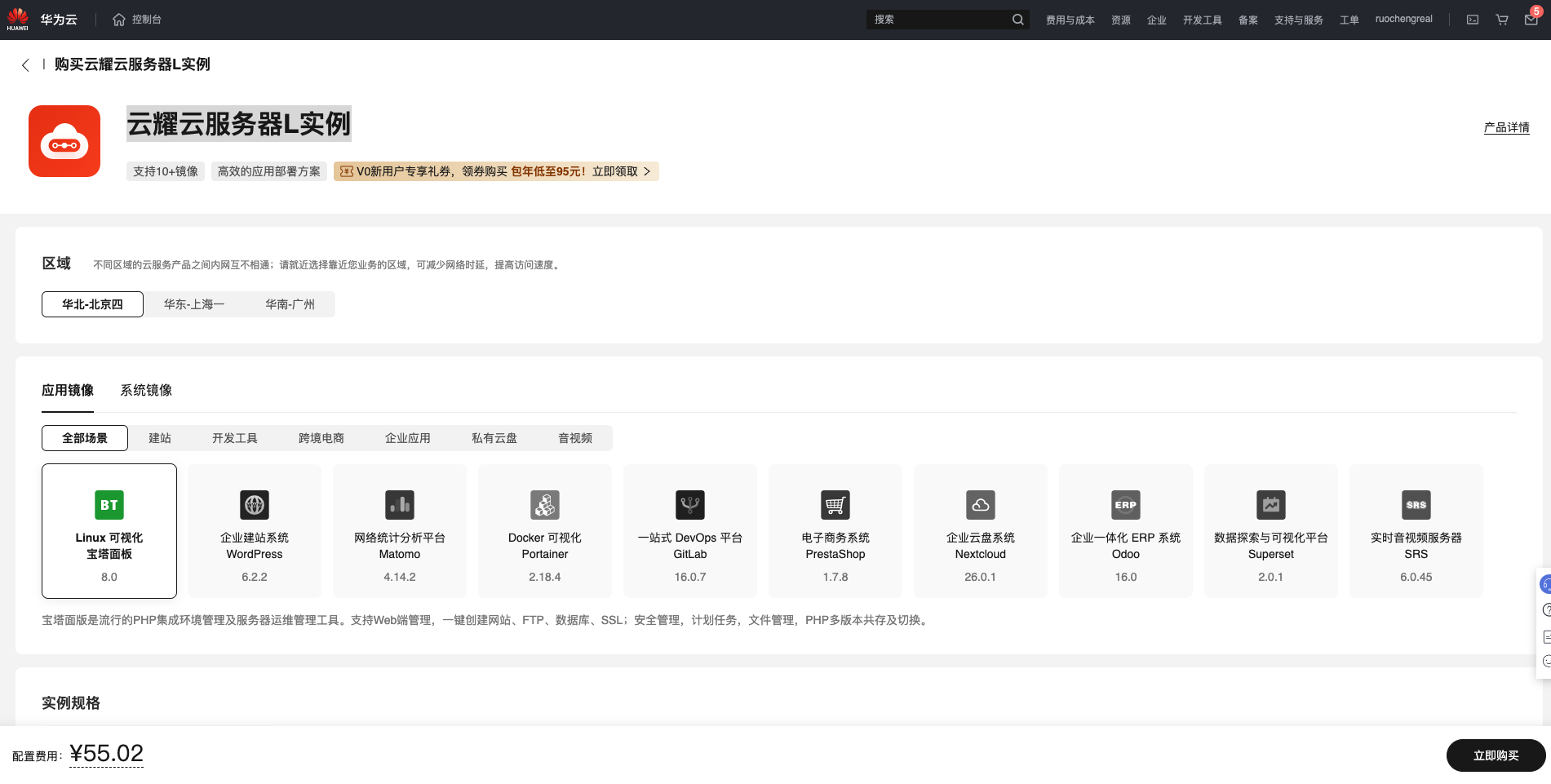
Log in to the cloud server
Note: Login for all Huawei products is basically in the upper right corner. Many newcomers are not clear about this.

After successfully logging in, enter btthe pagoda command in the terminal. There are two branches:
btNo response after entering the commandbtGarbled characters appear after entering the command
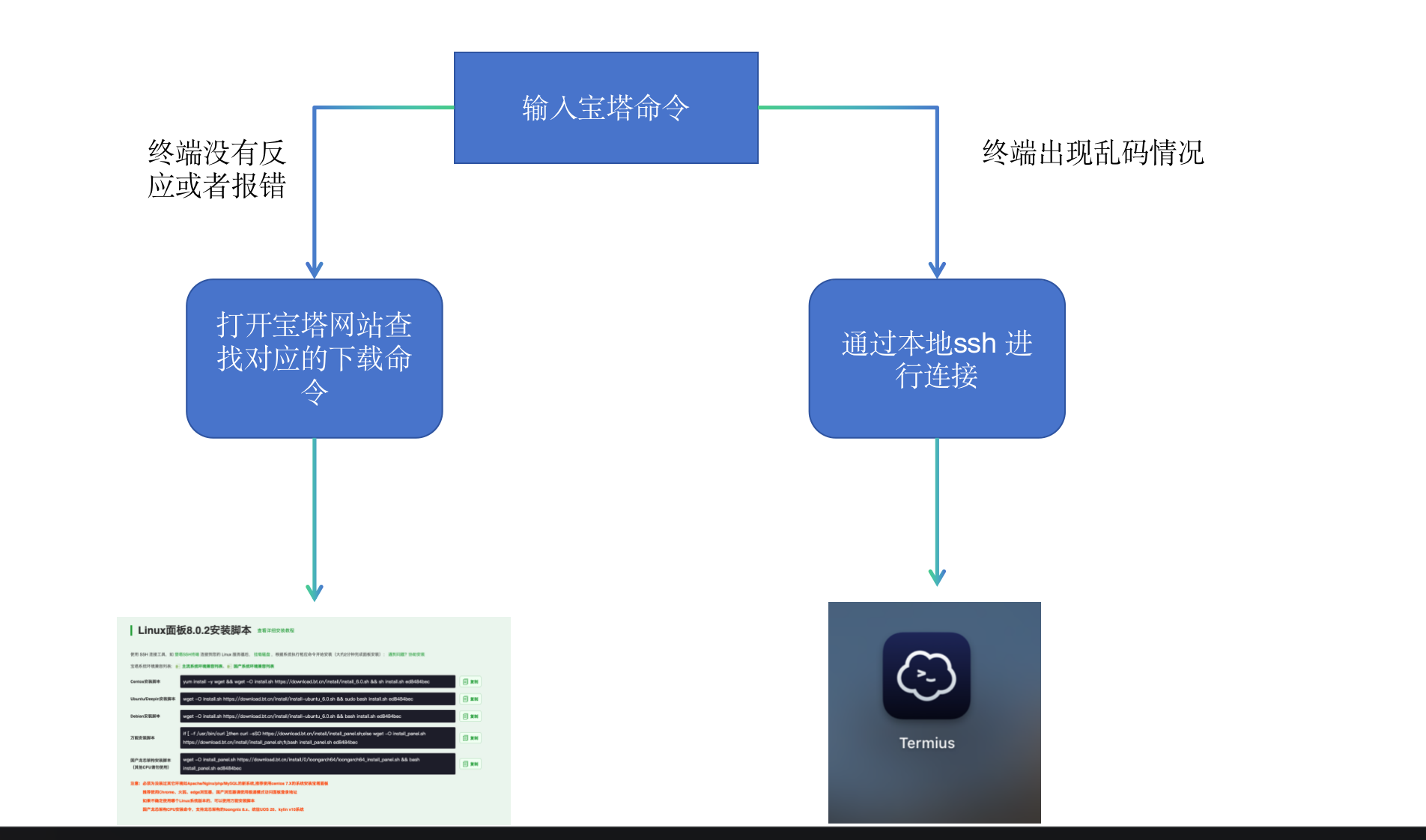
no response
If btthe terminal does not respond after entering the command, or an error is reported, then we can open the official website of Pagoda and select the corresponding server command to copy and install.
- Pagoda official website address: https://www.bt.cn/new/index.html
After visiting, click Install Now for Free
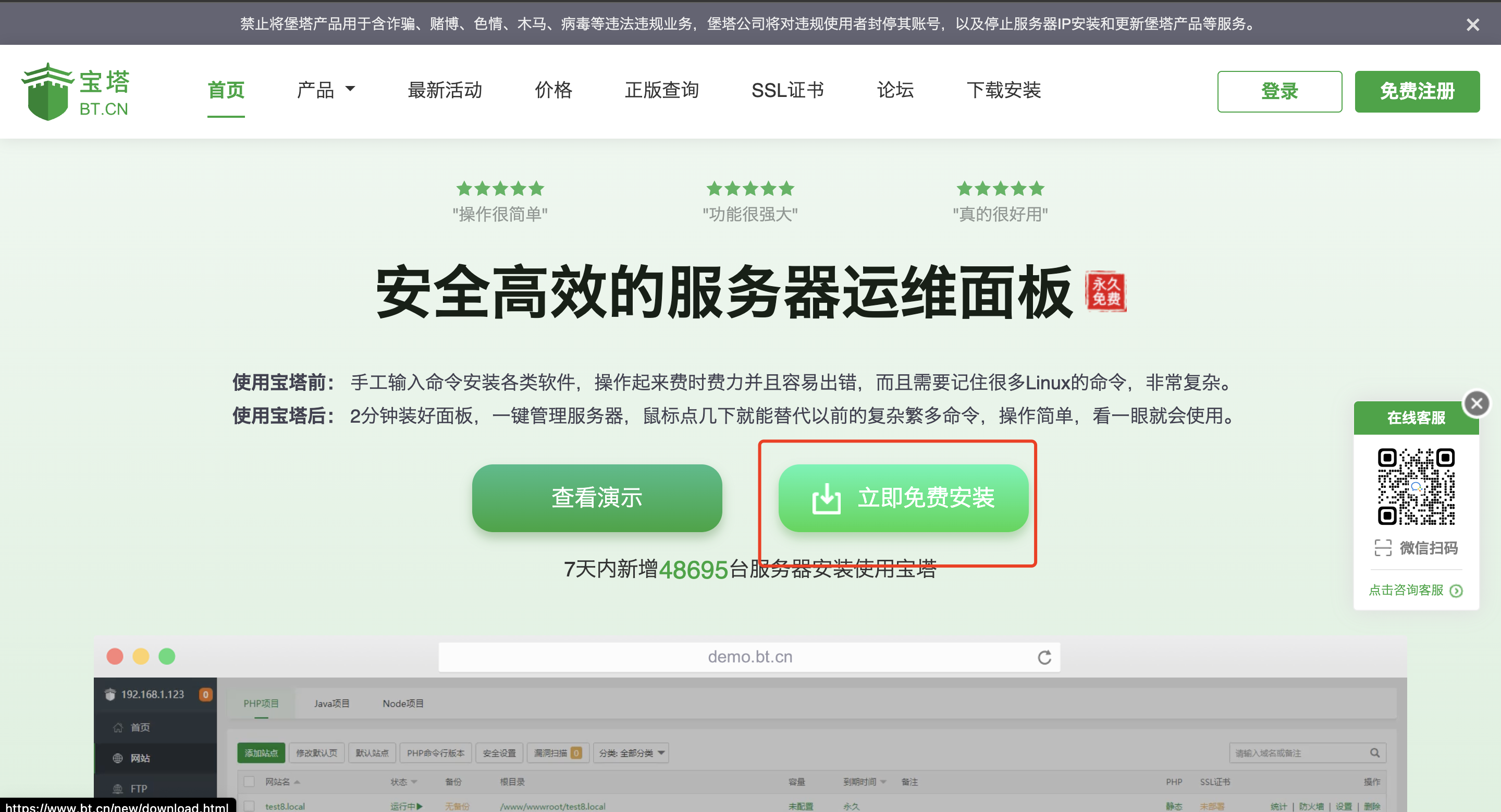
- Install now for free here you can choose
linuxpanels andwindowspanels

Here we select linuxthe panel and click Script Installation to enter. As shown in the figure, copy the script of the version corresponding to our server, and then paste the script into our server to install it.
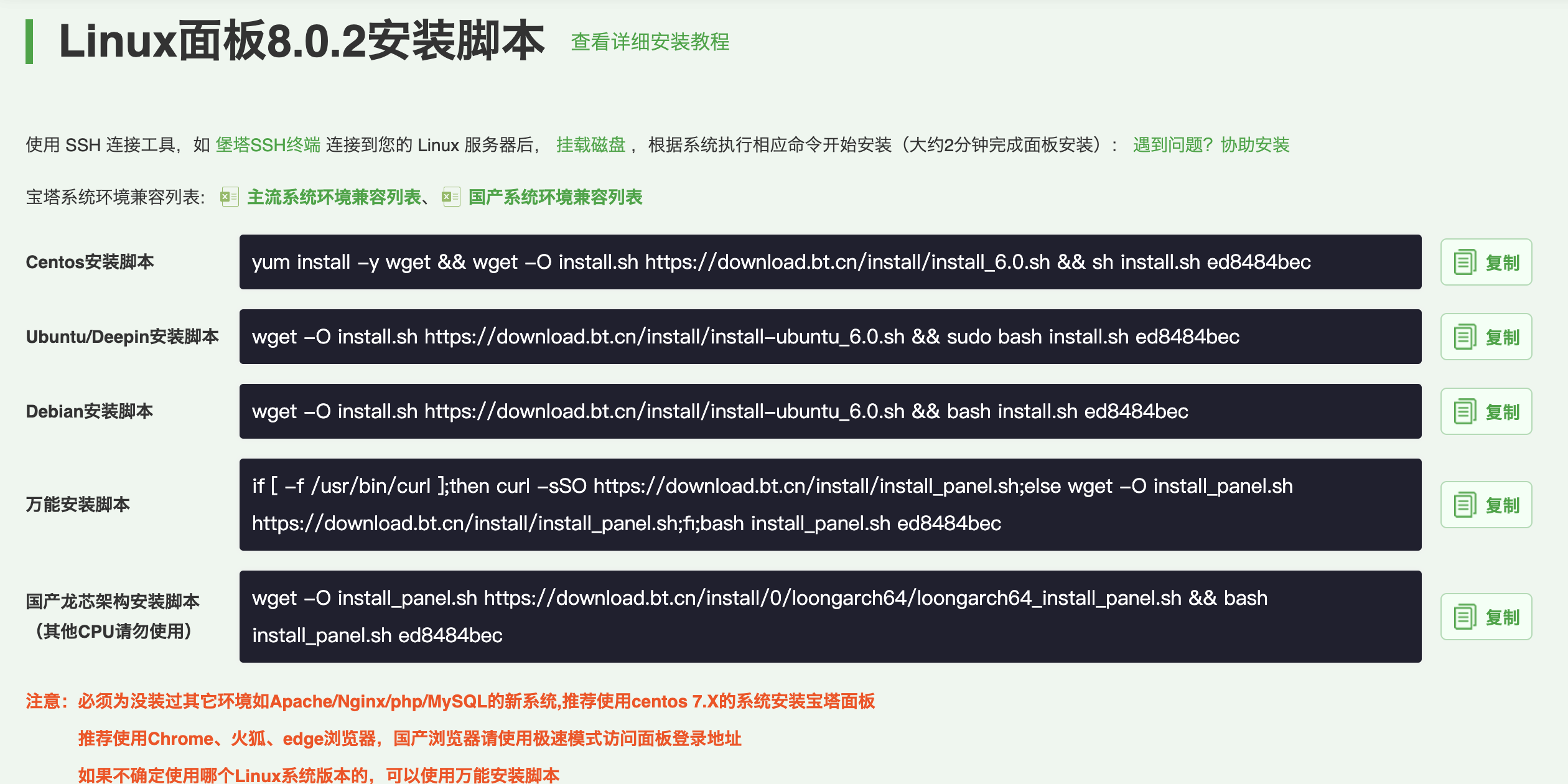
Garbled characters
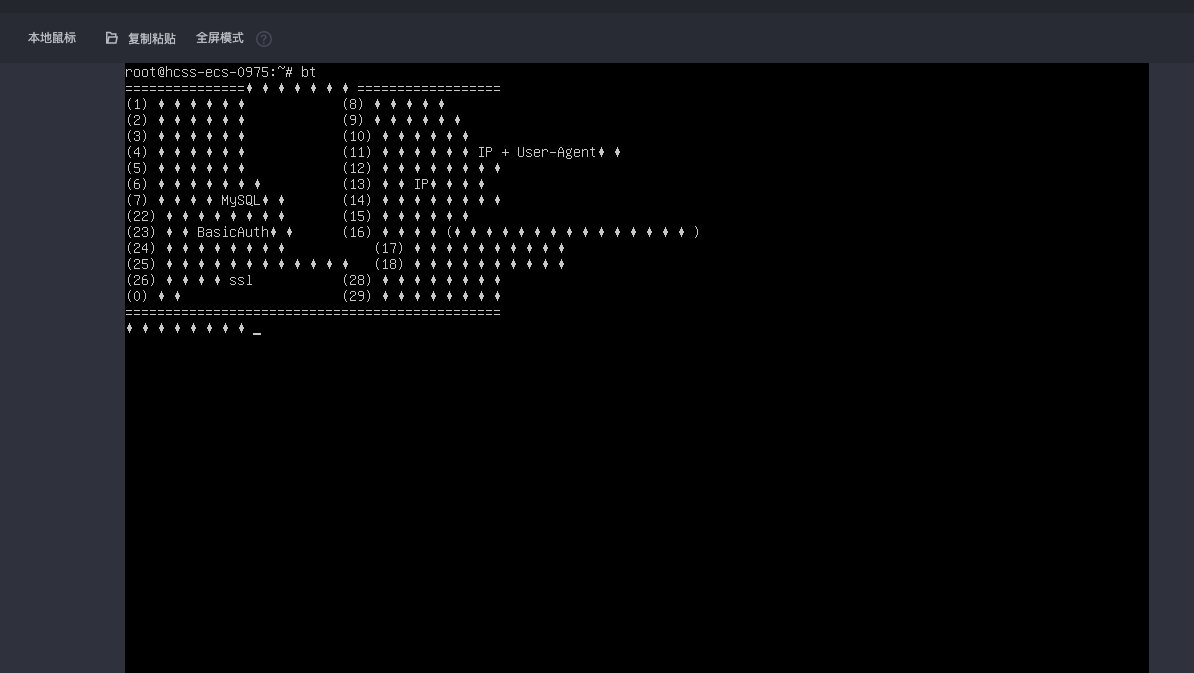
We use local tools for remote connection access

As shown in the picture, there are a total of 30 options. Here we choose 14 to check the access address of the pagoda, as shown in the picture below.
Note: We see a warning in the print information, and we need to open**8888** the ** port. We need to do this ourselves. Do it manually! (The content here will be explained in the next article) **
Next we access the external network panel address
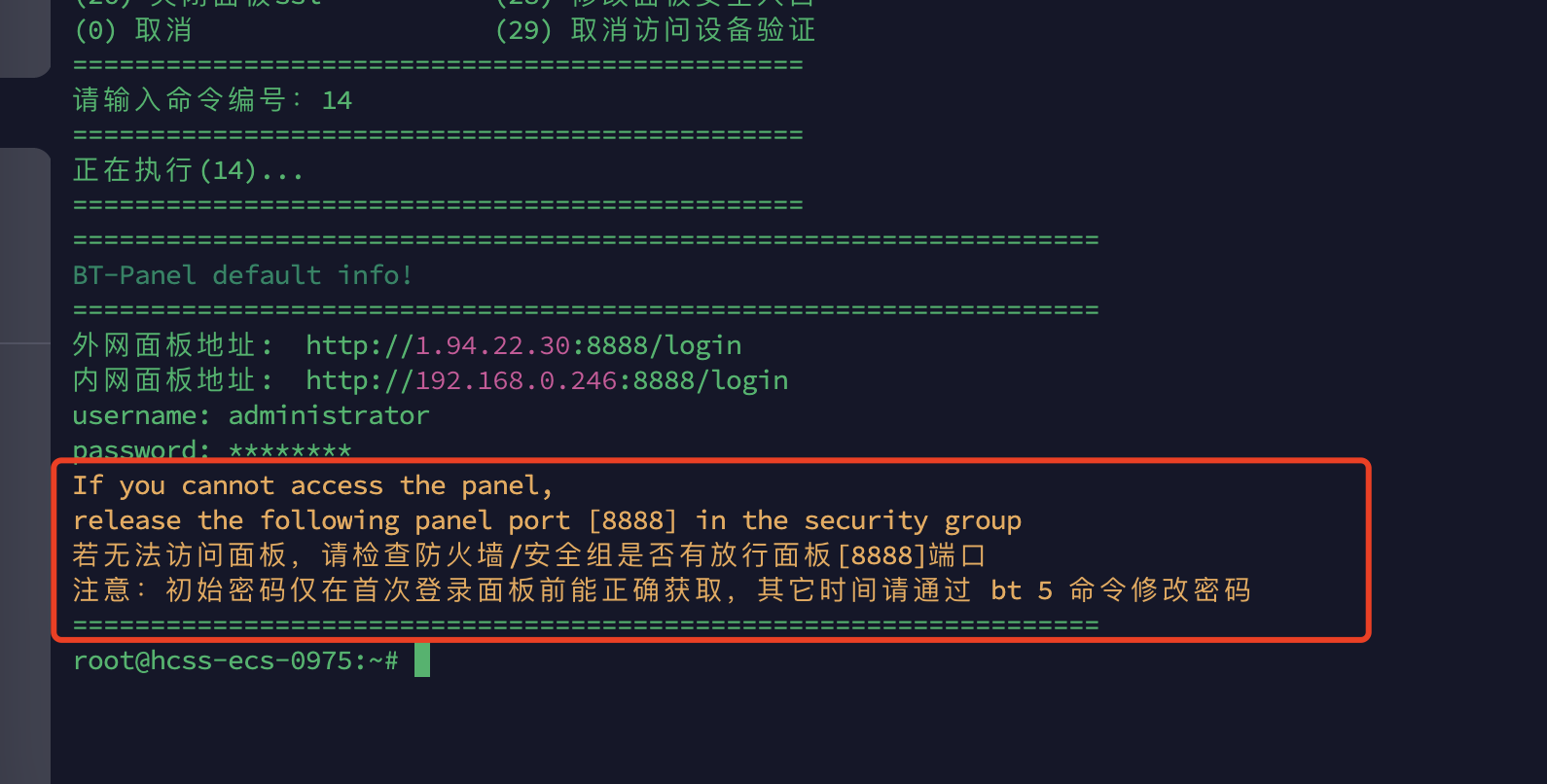
Pagoda setting
As shown in the figure, after successful login, there will be a pop-up window recommending the installation packageLNMP(推荐) . Here we directly click on the one-click installation.
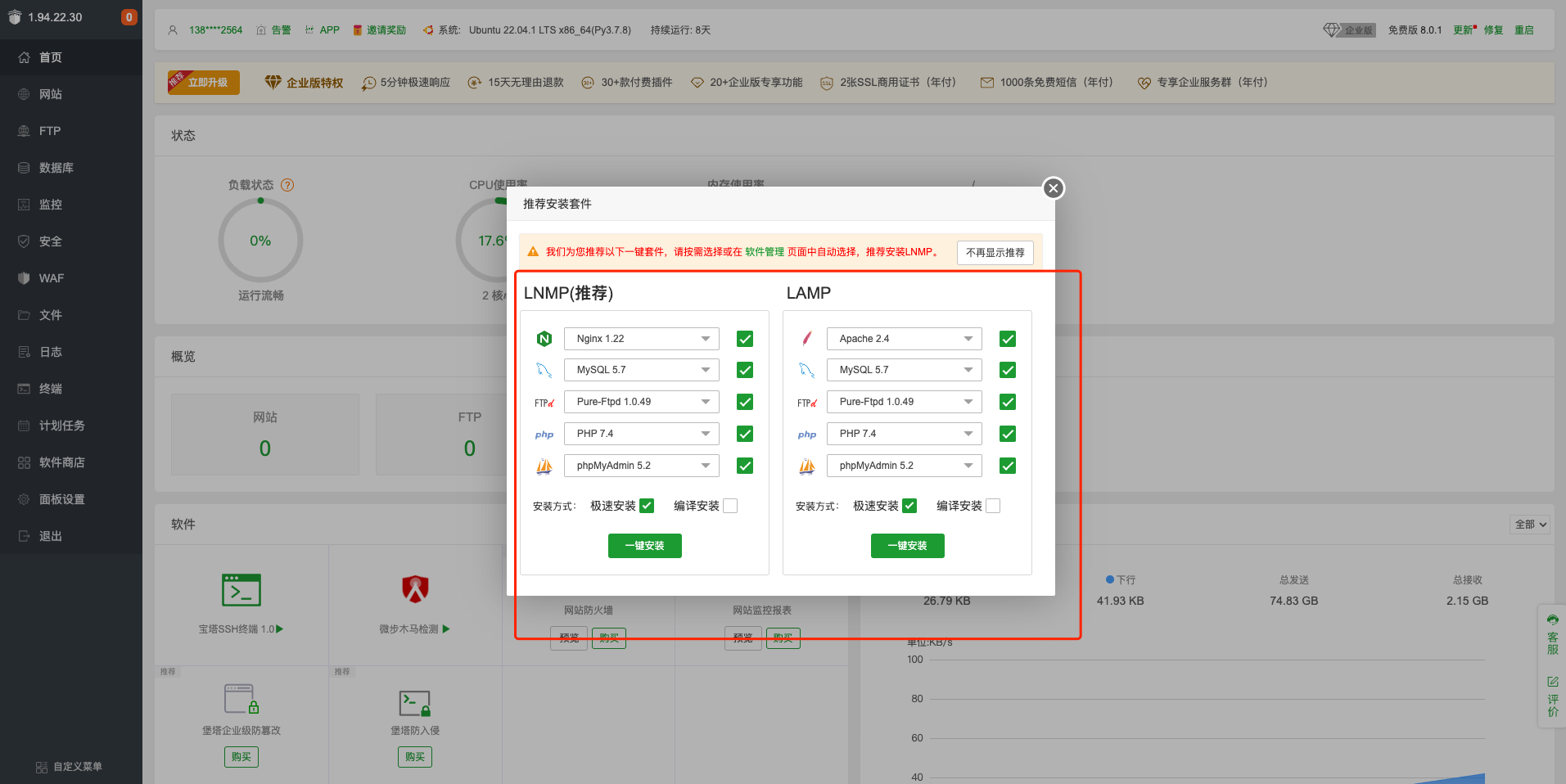
Kit installation
**Daji reminds you: Since the installation of the kit basically takes a long time, we can go and apply pesticides and take a look again! **
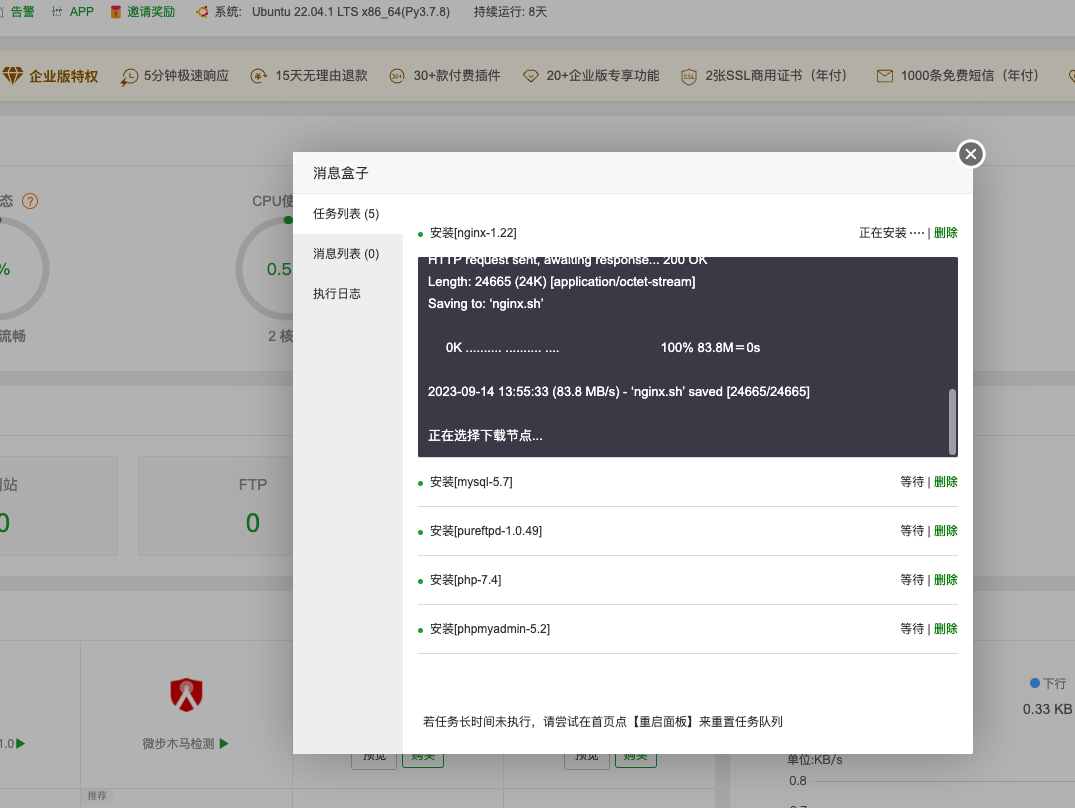
After the installation is successful, click 网站the option in the sidebar, select Add Site, and fill in the public IP of the server in the domain name.
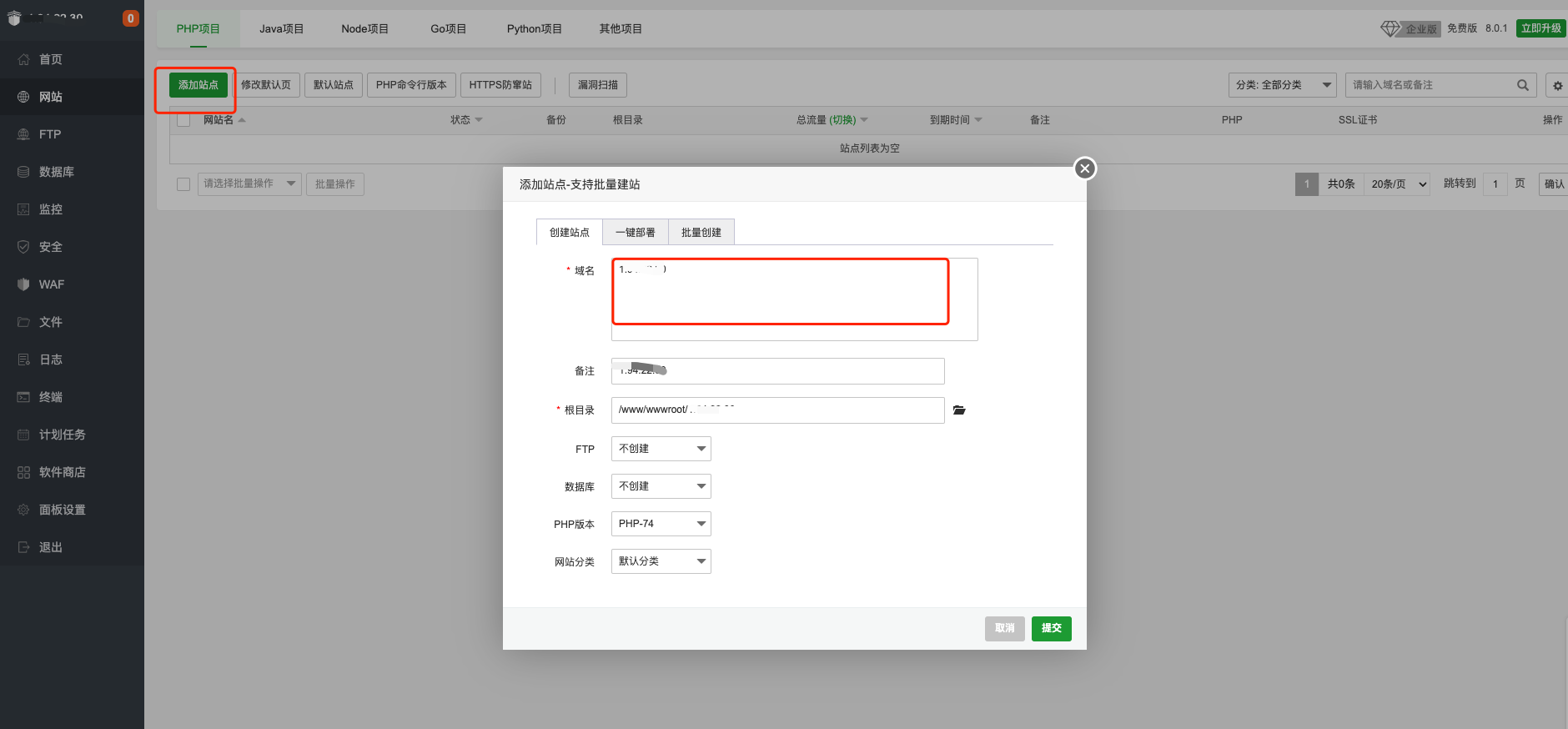
Click the submit button, and a prompt box will pop up **The website was successfully established, **Open a new browser window, enter the public IP to access, the prompt is as shown below

Deploy website
The preliminary work is completed. Next, we only need to deploy our web project to the project directory.

As shown in the figure, click on the file directory in the sidebar, find the root directory of the site we created before, and delete the content inside
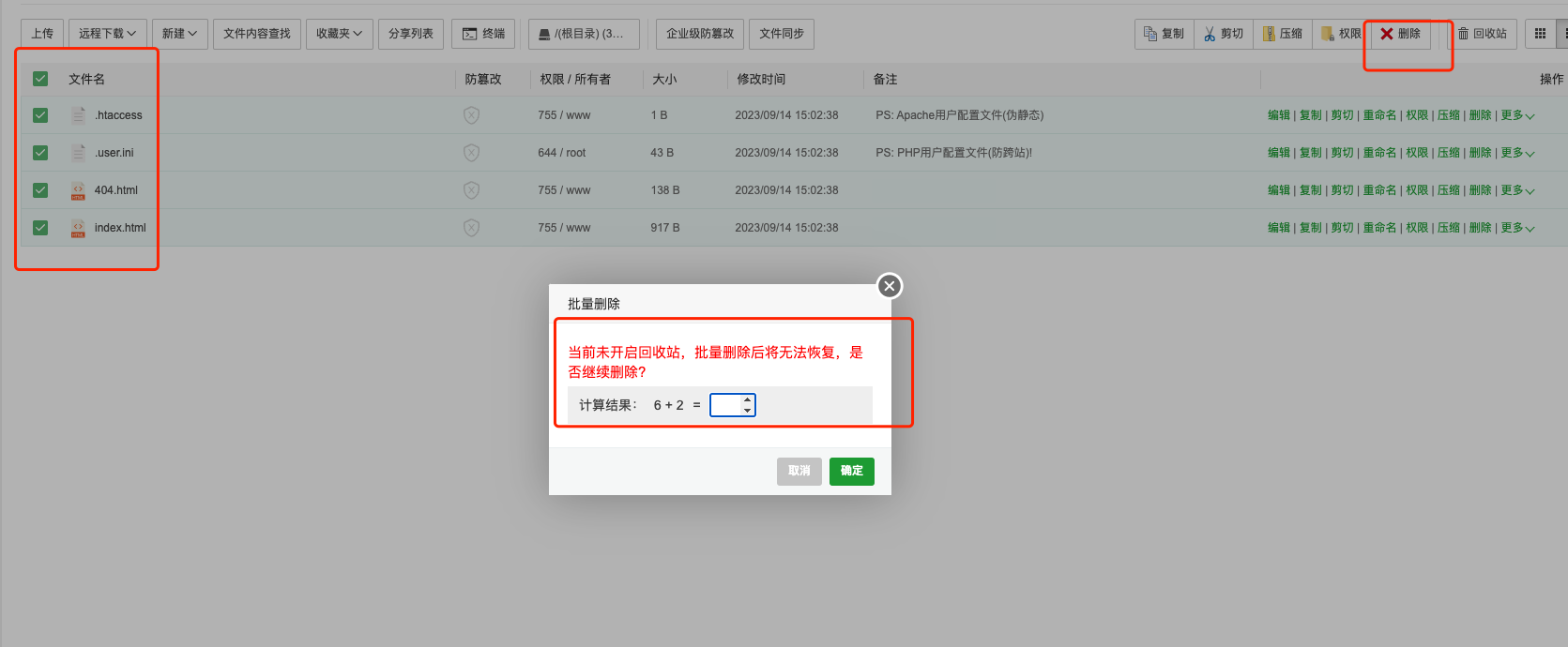
Next, copy our web project to this folder, wait for the upload to complete, and then access our server’s IP again.
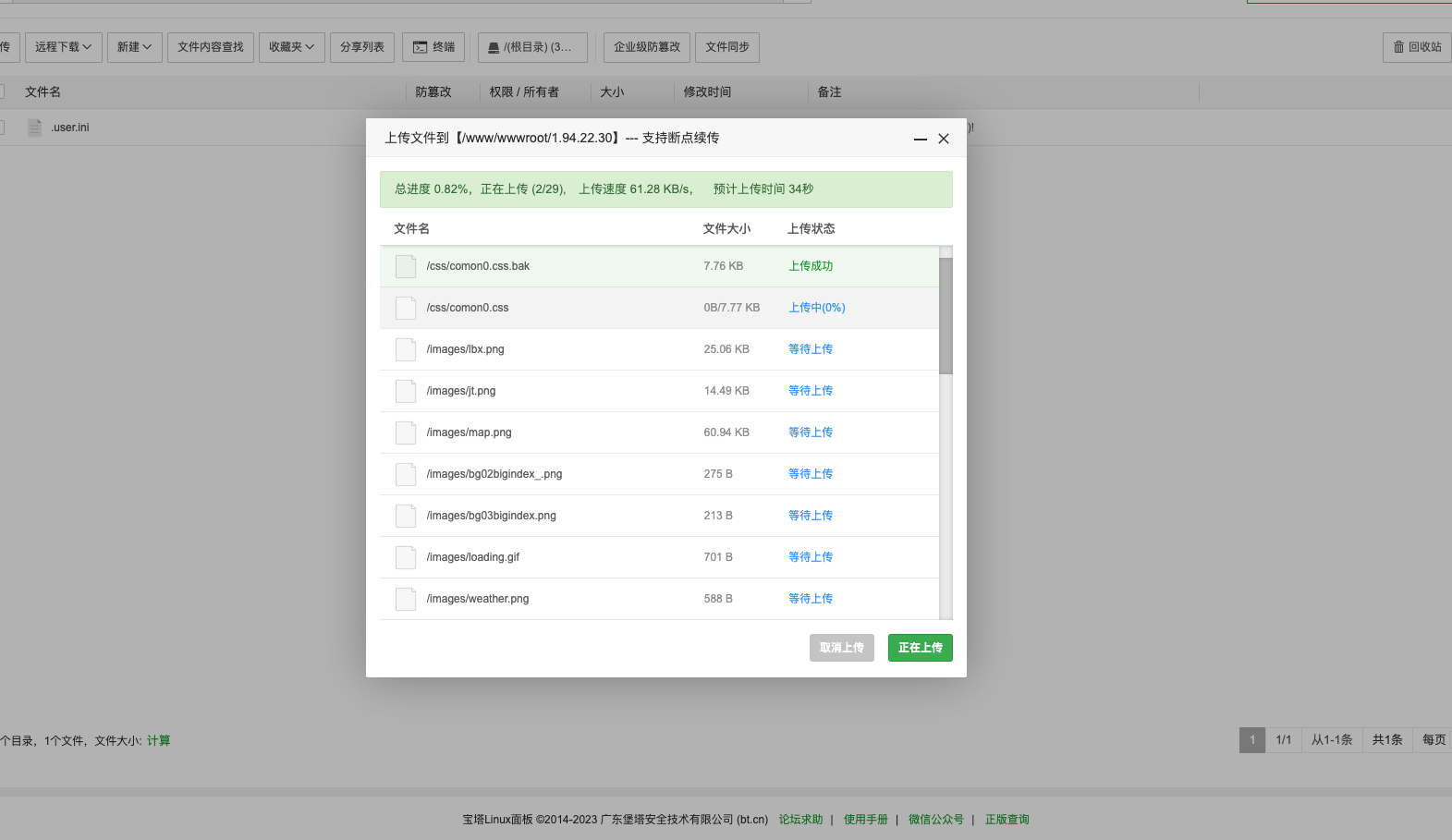
project visit
Enter the address in the browser to access: http://1.94.22.30/
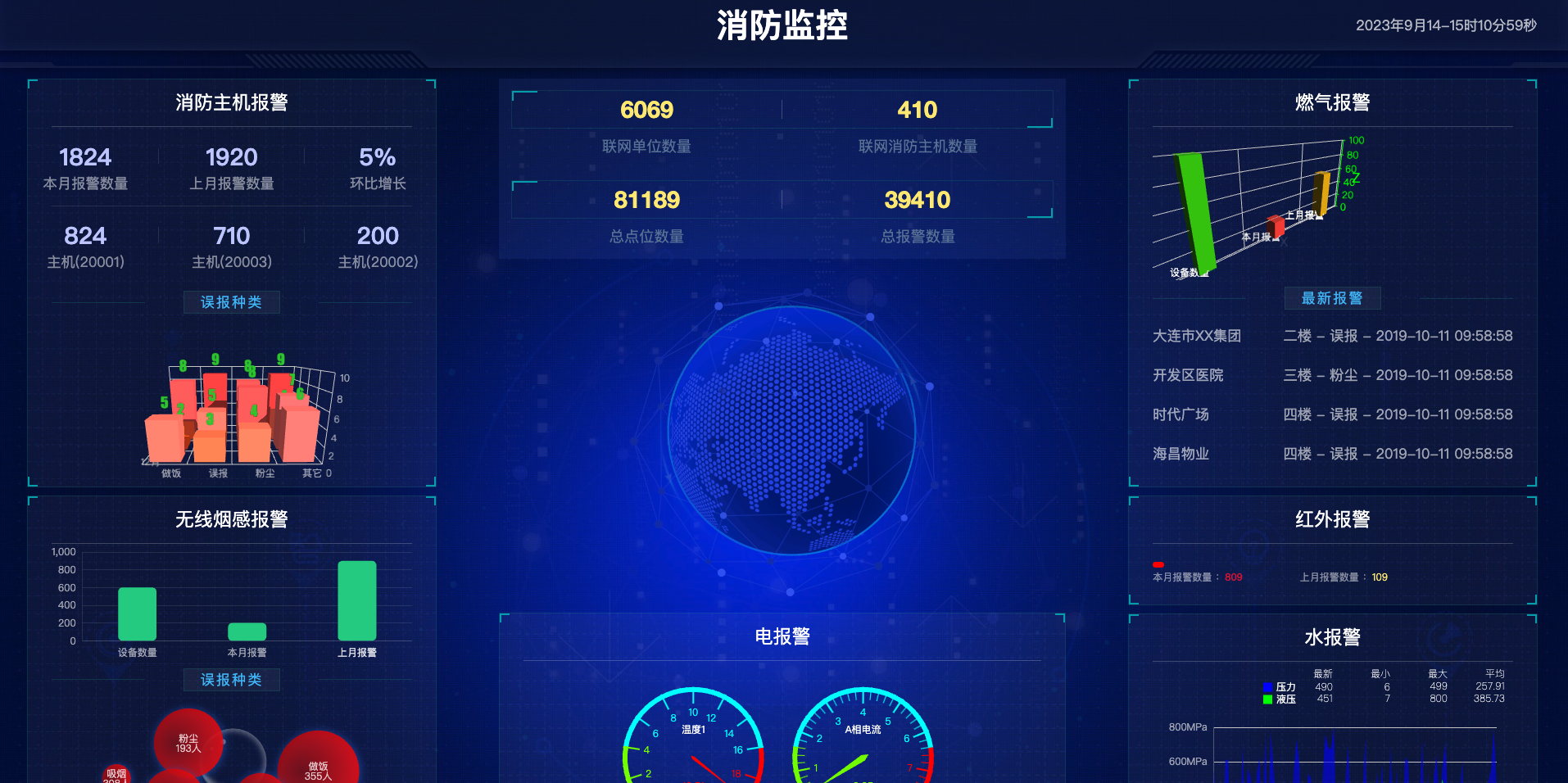
end
Okay, this is the end of how to use Huawei Cloud Yunyao Cloud Server L to deploy web projects. Overall, it is very simple.
This article introduces the purchase of Huawei Cloud's latest Yunyao Cloud Server L. How to use the Pagoda panel, and how to use the Pagoda for project deployment, everyone should try it quickly!!!